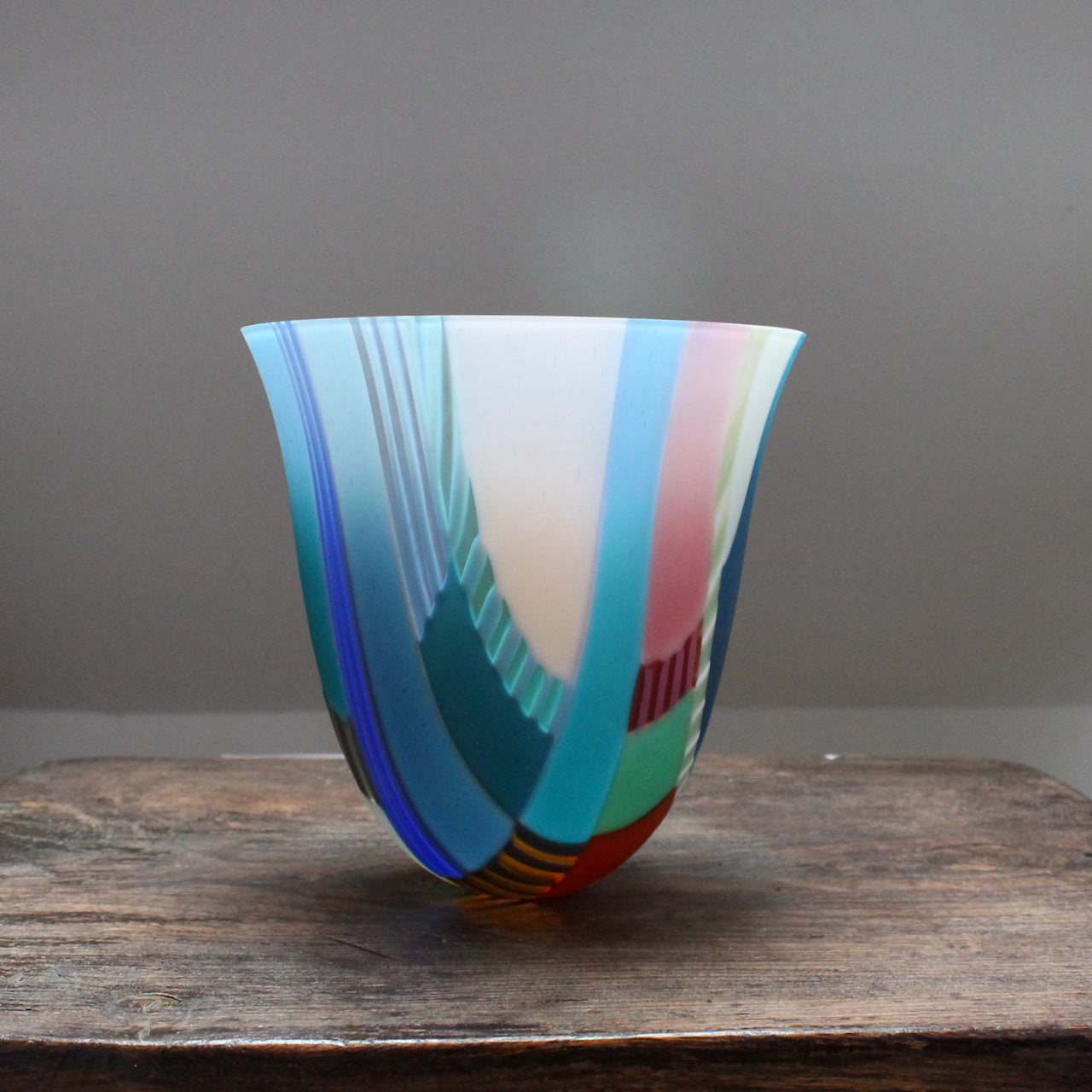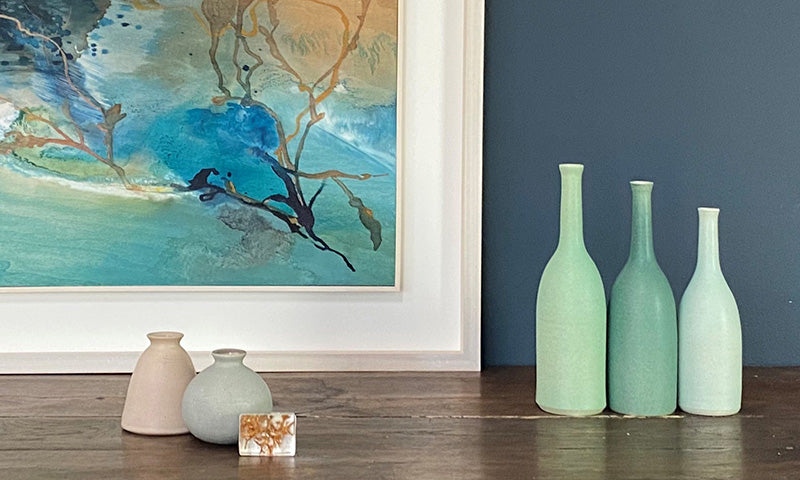Glass Act

Award winning glass artist Ruth Shelley is one of the Byre Gallery's longest standing makers having shown in most exhibitions with us since we opened. The winner of the Glass Sellers' Makers Award at the prestigious Glass Biennale in 2015, Ruth's career has gone from strength to strength; her work can be seen all the leading applied arts galleries in the UK, and is in collections in this country and internationally. We are very proud to still have her as one of 'our' makers - and are thrilled that she took the time to talk to us about her work.

You originally studied textiles - what made you switch to becoming a glass artist?
Growing up in a home surrounded by handmade crafts I was taught to knit at the age of three and I was intrigued by patterns, shapes and colour of the things around me and ever since have been fascinated by textiles. That resulted in deciding to study textiles at art college. After setting up a knitting business when I finished college, I went on to travel in Asia over a period of two years researching Ikat fabric. Travelling and collecting fabrics from many regions of India, Thailand, Malaysia and Indonesia, my head was full of colour inspiration and designs. Returning home with no work I stumbled across a course in Stained Glass and, as soon as I started working with the medium, it was love and first touch! I realised that my background in colour and design, suddenly made sense. The light reflecting on the glass touched me and made my heart sing. I had suddenly found my next career path.
The mix of colours that you bring together in your work is always so striking, can you explain a little about the technique of how you select and place your colours?
Ideally an inspiration shouts at me to be creative. Whether it’s a location, a collection of plants, or a journey I’m travelling on that reveals the colours that should be used. I then begin by reproducing those colours in watercolour, mixing the paint to get a realistic representation of the colours I’ve seen. From there I start making glass samples, arranging the glass by layering various opaque and transparent colours together, building up a library of colours and keeping detailed notes. I then work from a montage of photos and memory and start making a 3D glass painting of patterns and blocks of colours to represent my initial inspiration with the coloured experiments. Balance of tone and colour is very important to achieve the finished result. The collection in turn should sit comfortably back in the location where it was inspired.
Are you ever surprised by the results?
Colours speak to each other and are affected by which colour sits next to it. Some need space to show their beauty and therefore can’t use a strong colour along side it. Nature is a perfect source of colour balance and guide. I often hide colours in my initial blank fused piece, which only becomes apparent when it is stretched to finished vessel. I love the mystery of the application.
Have you had any huge disappointments when you’ve opened the kiln?
Oh yes, many – especially in the first few years of making vessels, but in time have learnt from my mistakes and now operate a very slow firing cycle. The most cracks and disappointments come when I cut off or am grinding the rim. I had a very big disappointment last January as I was hand lapping a very large vessel outside in the cold. It was very intricate and quite thick, but I believe the cold made the glass too brittle and it cracked from top to bottom. It no sits on a base shelf in my studio. I have to press on, learn from my mistakes and take detailed notes of the problems. Quite often though, today's mistakes are tomorrow’s source of inspiration.
Do you have a personal favourite collection - or piece?
In general, it’s the last piece I’ve made although particular favourites are Stormy Seas and Into the Deep

A number of your collections are named after place you know or have visited, how do you capture thecolours - photos or just your memory?
I use both. I use my phone as a quick stetch-book capturing quickly what I see while on the move, but I have also trained my eyes to mentally take photos and save them to memory. As a keen motorbike rider and love to take road trips to the continent, it’s not always safe or possible to stop when passing a beautiful field or a striking scene in order to take a photo, so I’ve had to take a mental photo, which when I stop, I will make colour notes and little stetches to reinforce the memory. When I return home, I’ll use the information as a basis for a new collection or piece.
Any plans to go travelling this year?
My husband and I had a European trip planned on the motorbikes for summer 2020 and initially postponed it to this summer , but by now it’s been cancelled due to the Covid situation in Europe. We hope to do a campervan tour, early in June including the Rame Peninsula and a Southern Ireland tour in late summer maybe on the bikes – lets see what happens next!
Take a look at Ruth's beautiful collection here




